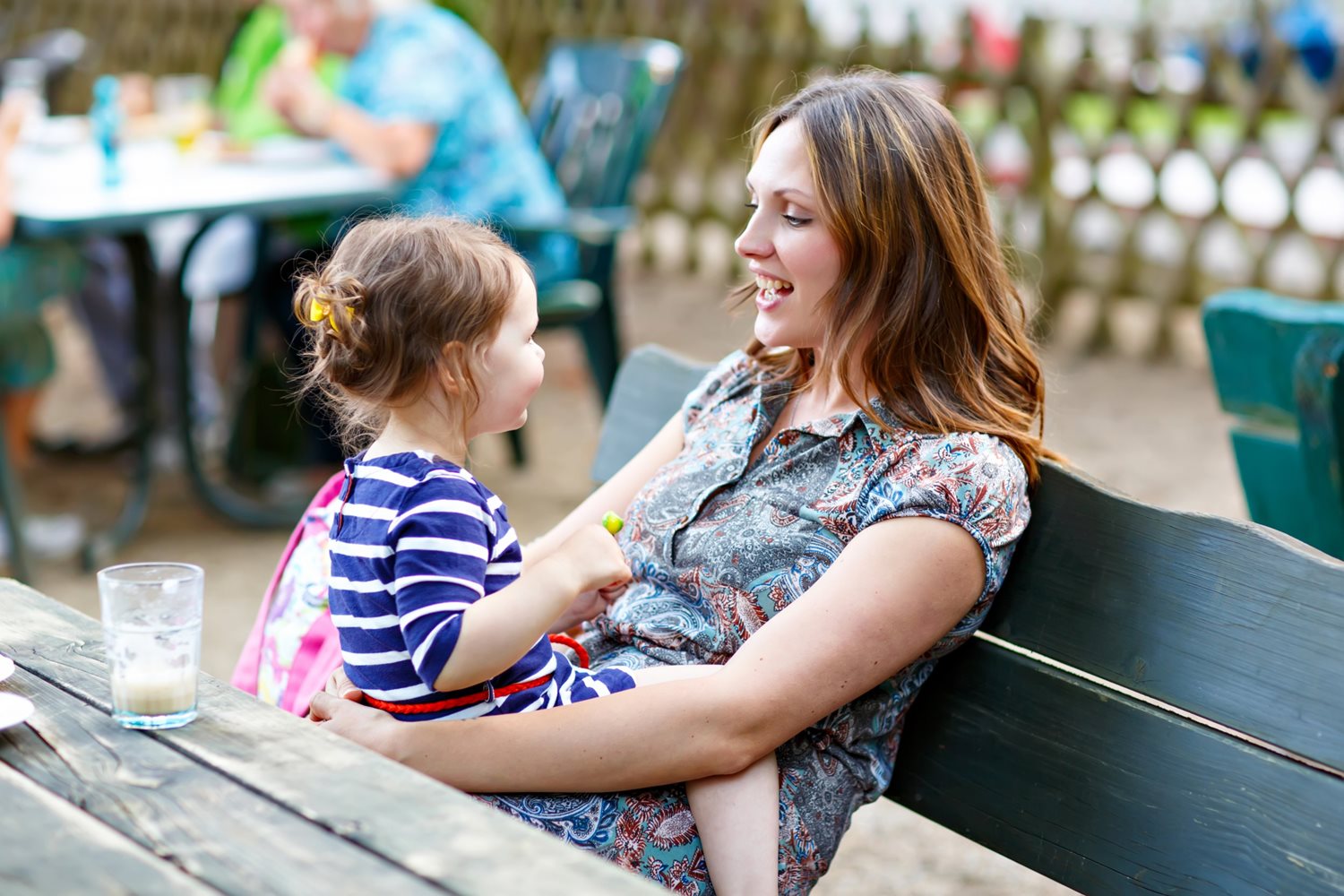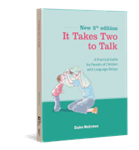Timing Is Everything When It Comes to Taking Turns with Your Child
 In order to have a conversation, people need to take turns. One person speaks while the other person listens. Then he or she stops talking and waits for the other person to talk. Then it repeats, back and forth, with each person talking and then waiting. All of this happens pretty quickly when adults talk to each other. In fact, there’s only a split second between adults’ turns (on average, between 0 - 200 milliseconds, to be precise!) [1] And sometimes turns overlap because adults frequently interrupt one another!
In order to have a conversation, people need to take turns. One person speaks while the other person listens. Then he or she stops talking and waits for the other person to talk. Then it repeats, back and forth, with each person talking and then waiting. All of this happens pretty quickly when adults talk to each other. In fact, there’s only a split second between adults’ turns (on average, between 0 - 200 milliseconds, to be precise!) [1] And sometimes turns overlap because adults frequently interrupt one another!
When it comes to having conversations with young children, especially those with delayed language, things need to slow down. Young children need more time to process adults’ messages, and then think about what they want to say or do next. The question is…how long should you wait when you take turns interacting with your child? The answer depends on whether your child has taken his turn or not.
Wait BEFORE your child takes a turn
It’s very important to give your child a lot of time to take a turn. Whether it’s the first turn in the interaction or a turn during the conversation, waiting encourages your child to take a turn and keep the interaction going.
Why wait before your child takes a turn?
When you stop and wait to give your child a chance to take a turn, you are:
- letting him know that his message is important to you
- giving him time to figure out what you just said
- giving him a chance to think about what he wants to say or do next
- helping him learn that conversations involve back-and-forth turns
Depending on your child’s stage of language development, he might take a turn by looking at you, using actions, body movements, gestures, facial expressions, sounds, or words.
How to wait
- Stop and wait, without talking
- Be face-to-face with your child
- Lean in and look at him as if you expect him to do something (i.e. take a turn)
When you wait in this way, your child gets clues that tell him it’s his turn to do or say something.
How long should you wait?
That depends on your child. Different children need different amounts of time to take a turn. Very young children and children with language delays may need more time. Some children need 5-10 seconds in order to take a turn. Try to “read” your child – if he loses interest in interacting, it’s likely you’ve waited too long. But if you give your child a little extra time, he might surprise you by communicating in a new way!
Don’t wait AFTER your child takes a turn
Once your child takes a turn, don’t wait. Respond right away because this lets him know that:
- you received his message
- you are interested in what he did or said
- you want the interaction to keep going
Respond immediately, with interest
If you respond immediately by saying something that relates directly to whatever he just communicated about, it helps him learn the words that match his interests. For example, if your child points to an airplane and you respond right away by saying “Oh look at the airplane!,” he has a chance to attach the word “airplane” to the flying machine in the sky as he’s still paying attention to it. If too much time passes between your child’s turn and your response, it becomes difficult for him to match what you’ve said to what he was paying attention to and to learn from it. For example, if you start talking about the airplane even five seconds after your child points to it, he may have started to pay attention to something else, like a bird in a nearby tree. He can’t attach the word “airplane” to the flying machine in the sky because now he’s thinking about a bird. So, as you can see, timing is everything!
Children with communication delays sometimes need help understanding that conversations involve taking turns back and forth many times. In order to help them learn this, it’s important that parents respond immediately after their child takes a turn [2]. This shows children that conversations have a back-and-forth flow.
Recent studies have discovered some interesting things about the way parents respond when talking to their young children:
- Responding right away to babies makes a difference - One study looked at the ways mothers respond to their 9-month old babies. They found out that responding to babies right away made a big difference. When they looked at all of the mothers’ responses, it was only those that were immediate and matched the child’s focus that influenced the size of their child’s vocabulary later on (at 18 months.)[3]
- Parents respond faster when children have bigger vocabularies - Another study found that parents tend to respond faster to children who use more words, and slower to children with smaller vocabularies [4]. This means that young children who don’t say many words or children with delayed language might not receive responses immediately after they take a turn. And these children really need immediate responses that follow their turns to help them learn language.
Timing is everything
In order to help children learn language and how to have conversations, it’s really important that they learn about taking turns. One of the best ways to help them is to:
- wait long enough to give them a chance to take a turn, and then
- respond immediately with interest once they take a turn
By waiting for your child to take a turn, and then responding right away when he does, you are helping your child learn all about taking turns, having conversations, and the language that matches his interests.

Learn more about helping your child take turns with the Hanen guidebook, It Takes Two to Talk.
Similar articles by tag:
Conversation | Language Development | Language Delay | Turn-taking
